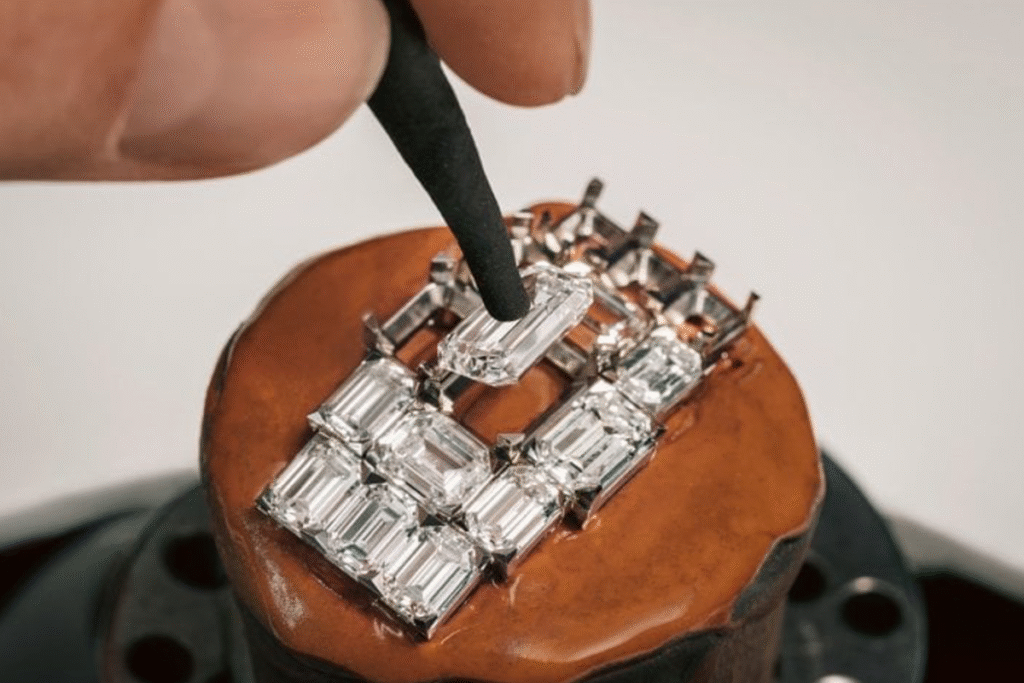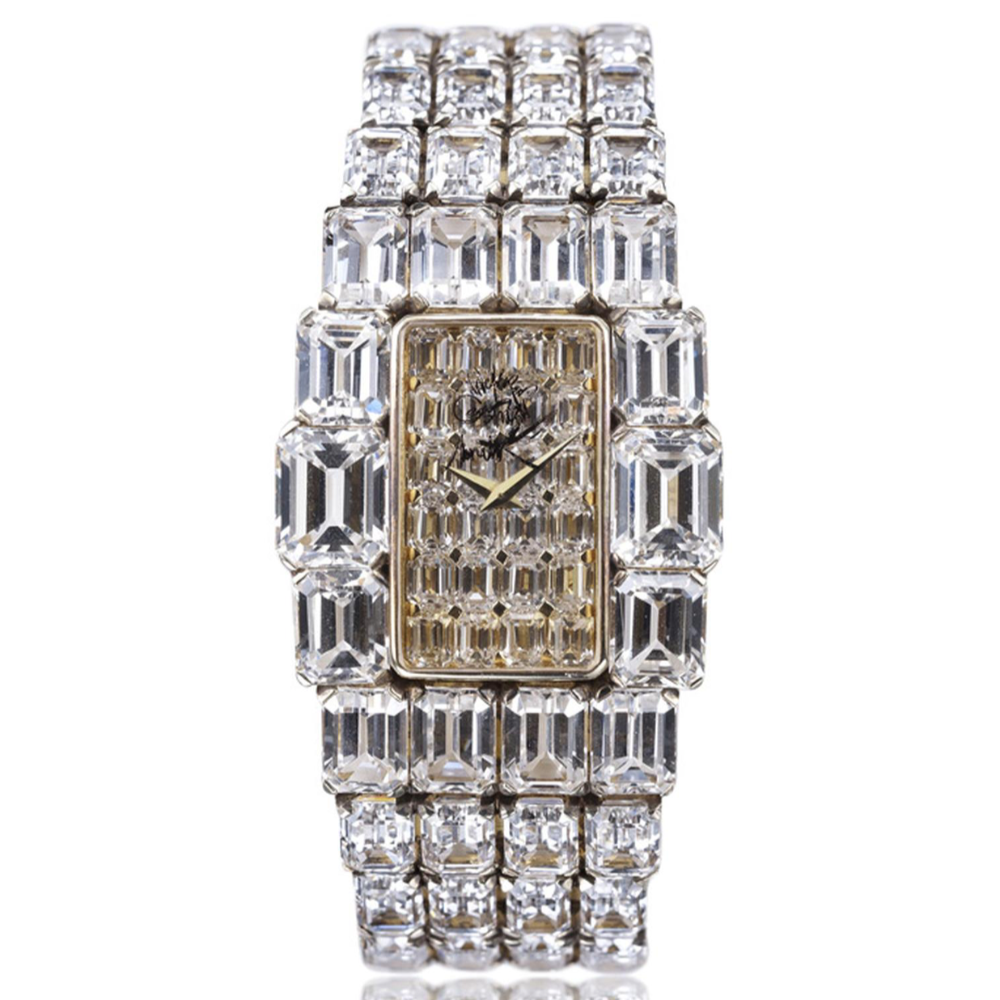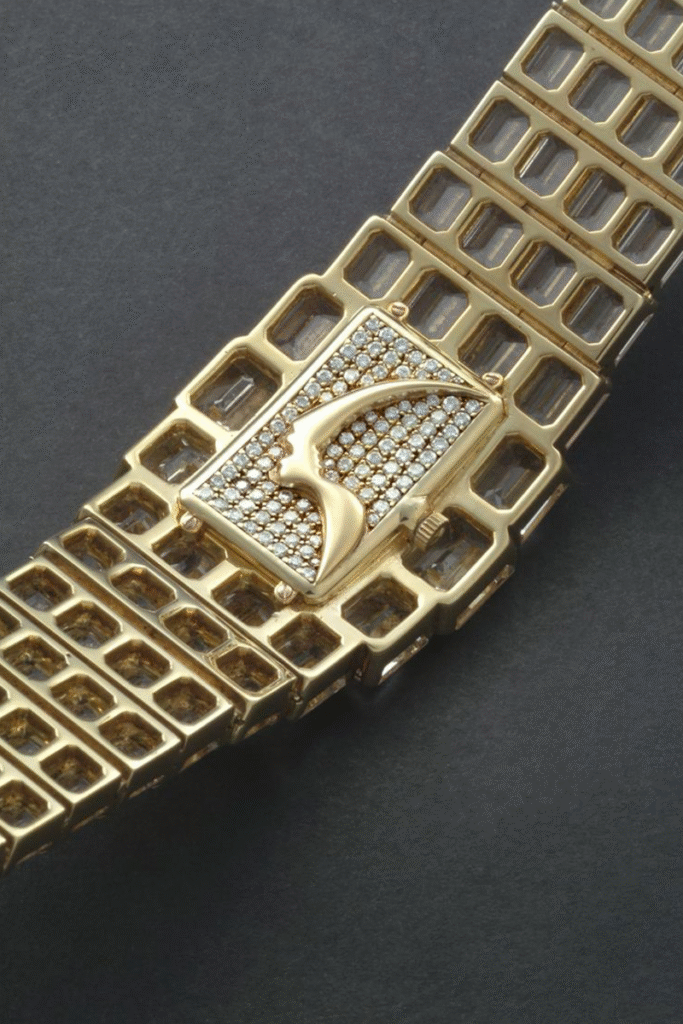The Birth of a Legend
In 1979, Vacheron Constantin unveiled a creation that would redefine the limits of both watchmaking and high jewellery. Named Kallista, from the Greek word meaning “the most beautiful”, it stood as the world’s most expensive watch at the time, valued at five million dollars. More than an object of timekeeping, it was a statement of mastery, rarity and artistic ambition. Kallista was not born from a design brief but from a vision: to transform a watch into a living sculpture of light.

The late 1970s were years of experimentation in the world of haute horologerie. Quartz technology had disrupted the market, forcing traditional houses to reassert their identity through artistry and craftsmanship rather than industrial precision. Against this backdrop, Vacheron Constantin conceived a timepiece that rejected function in favour of beauty. The Kallista was an ode to traditional handwork and gem-setting, a demonstration that mechanical watchmaking and jewellery could be fused into a single creation of absolute refinement.
Diamonds that Defined Design
The project began with a block of solid gold and the challenge of setting it with more than one hundred of the world’s finest diamonds. Each stone was an emerald cut, chosen for its geometry, clarity and mirror-like symmetry. The rectangular facets of these diamonds inspired the entire design of the watch. Rather than designing a case and then adorning it with stones, Vacheron Constantin reversed the process. The dimensions, proportions and surfaces of the Kallista were determined by the size and pattern of the emerald-cut diamonds themselves. Each stone had to fit perfectly into the next, creating an uninterrupted field of brilliance that covered the case and bracelet like armour made of light.

When Vacheron Constantin set out to realise the Kallista, the challenge extended far beyond its gold framework. The watch is affixed with 118 emerald-cut diamonds, amounting to about 130 carats in total. The choice of emerald cut was deliberate: it offers a flat, broad table and linear facets, allowing the stones to lie flush against one another and form a nearly continuous reflective surface. The uniformity of these diamonds was crucial. Each one had to match in colour, clarity and proportions to preserve perfect harmony. Only stones of the highest gemmological quality were selected: colourless in the D to F range and of exceptional clarity, from internally flawless to very very slightly included. Emerald cuts highlight transparency more than brilliance, revealing inclusions with unforgiving clarity. This meant that Vacheron’s gemologists rejected any diamond that displayed even the faintest imperfection.
The sourcing of these stones was a feat in itself. It took years of collaboration with master cutters and dealers across the globe to locate 118 diamonds identical in both size and quality. Each stone was meticulously polished, measured and adjusted before being placed into its setting. Only after this exhaustive process could the gem-setters begin the construction, aligning every diamond edge to edge with minimal metal visible. The Kallista was built slowly, with precision akin to that of a cathedral, but made of light rather than stone, representing a new kind of innovation. At a time when brands were competing on mechanical breakthroughs, Vacheron Constantin proved that artistry and craftsmanship could hold equal weight. The Kallista redefined value in horology, elevating aesthetic perfection above technical functionality.
The Mystery of Ownership
The Kallista’s story does not end with its creation. Its ownership has become part of its legend. Only one example was ever made, and Vacheron Constantin has never revealed who acquired it. Most historians believe the watch was sold shortly after its completion to a prominent figure in the Middle East, possibly a member of a royal family, during the golden age of private commissions in Geneva.

Others suggest it passed into a European private collection, re-emerging only under strict security at select Vacheron exhibitions. Whether resting in a royal vault or guarded within the brand’s heritage archives, its current whereabouts remain unknown. This aura of secrecy has only deepened the Kallista’s allure, transforming it from a masterpiece of craftsmanship into a modern myth of luxury.
The Kalla Legacy
The legacy of Kallista did not end in 1979. In 1981, Vacheron Constantin introduced the Kalla collection, a continuation of its philosophy where diamonds dictated the design language. These watches bore noble names such as King, Lord, Lady, Count and Countess, each reflecting the elegance of the original. Others, like Pagoda, Wave and Flame, celebrated movement and sculptural form. The King Kalla and Lady Kalla became the most emblematic of the collection, continuing the principle of constructing the watch around perfectly calibrated stones. Only a few examples were ever produced due to the near-impossible task of sourcing diamonds that met the same exacting standards. Every Kalla piece upheld the Kallista ethos: the design began with the gem, and the rest of the watch was built in its service.

Over the following decades, the Kalla line gained a following among women of extraordinary influence and style. Princess Diana was famously photographed wearing a Lady Kalla, reportedly gifted to her by a Middle Eastern dignitary. The refined geometry of its emerald-cut diamonds and the discreet dial perfectly matched her understated glamour. Other high-profile women, including Princess Grace of Monaco and Queen Sophia of Spain, were also known to favour Vacheron Constantin’s diamond-set creations, helping to cement the Kalla’s reputation as a watch of royal elegance. Their appearances transformed the Kalla from a technical and artistic feat into a symbol of timeless sophistication worn by those who embodied it.
Today, the Kallista remains a symbol of timeless beauty and perfection. It represents a moment when craftsmanship triumphed over technology and when gem-setting became pure art. More than forty years later, its brilliance still captivates, reminding us that true luxury lies in the harmony between time, light and human skill.
Follow us on our social media channels to stay up to date with the latest news from the world of watchmaking, and discover what’s new on Watchype.
